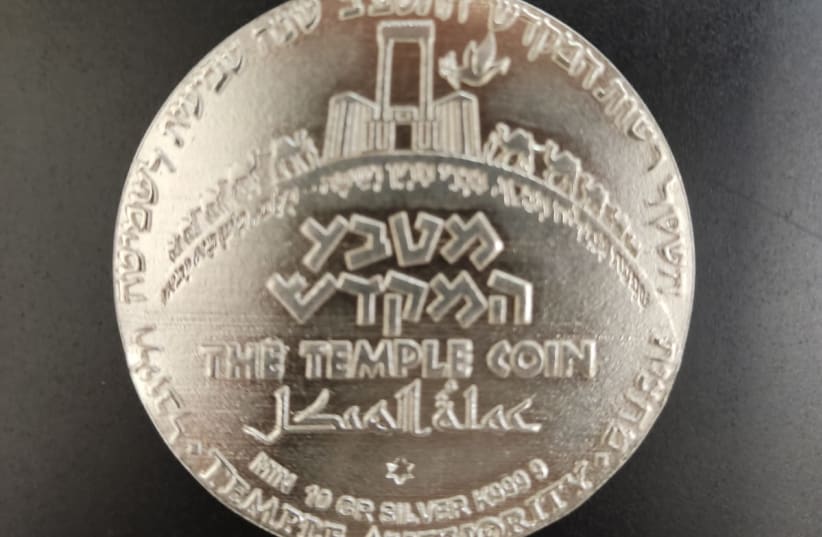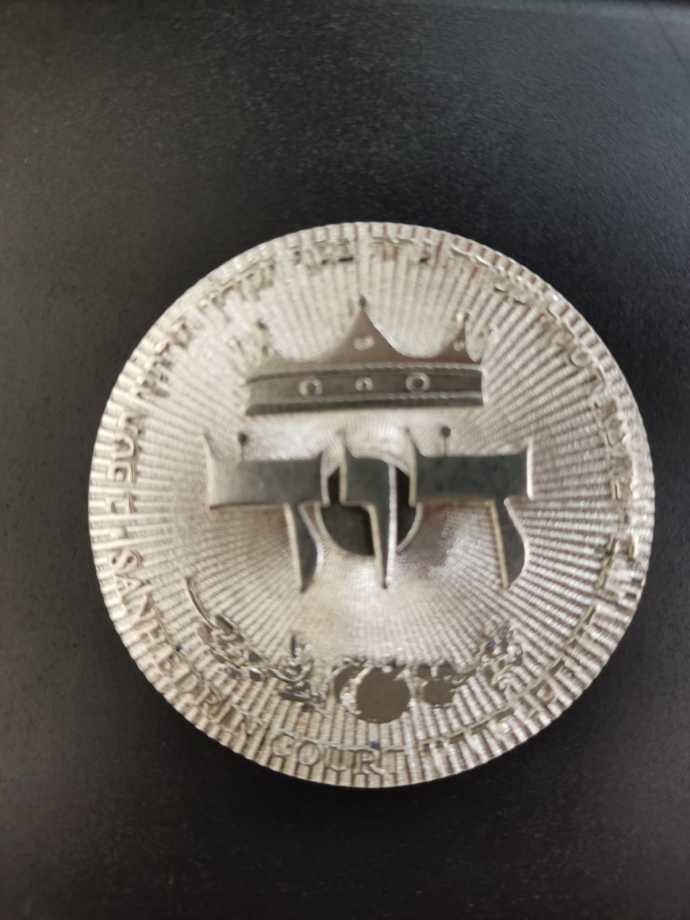The Mikdash (Temple) Educational Center in conjunction with Rabbi Hillel Weiss, the former spokesman for the nascent Sanhedrin, has minted a silver coin to promote a practical effort to establish the third temple.
The coin contains 32 grams of pure silver and represents three times the amount of the biblical silver half-shekel that was donated by every Jewish male to finance the daily operation of the temple.
The value of the coins is equal to three half shekels. This corresponds to the three times in a year, which one ascends to the temple. Everyone who donates and receives a coin is an active partner in another step towards the building of the third temple.
Weiss emphasized that the minting of the coin was timed to coincide with the beginning of the Hebrew month of Adar when these coins were collected for the temple.
It is currently the Hebrew month of Adar.
“Donating the annual silver half-shekel is incumbent upon the Jews but this is not just a Jewish project,” Weiss explained to The Jerusalem Post.
“The concept of money in the world and all of the basis of commerce has been lost,” he said. “Commerce is how people interact. The 70 nations would come to the temple in Jerusalem on the pilgrim festivals and interact. They would express their dedication to the common values of the Seven Noahide Laws. This would help establish the basis for healthy commerce. If there are no shared values, if one country allows theft or lawlessness or the spilling of blood, there can be no commerce.”
He said that “what we have now is virtual money, controlled entirely by rulers who do not fear God, virtual money whose worth is determined by the fantasies of men. The value of money must be based on gold or silver and this was expressed every year in the temple in Jerusalem when the value of the silver half-shekel was determined according to the Bible. This is the meaning of ‘mine is the gold, mine is the silver’” as referenced in Hagai 2:8. He also cited the Prophet Isaiah (56:7).
“For this reason, the first temples were, and the third temple must be, a house of prayer for all nations,” Weiss said. “The Temple was and will be, the only hope for true peace among the nations. History has shown that any effort to bring the nations together that is not centered in Jerusalem, the city of peace, ends in catastrophe.”
“The silver half-shekel was required from the Jews but the temple was also maintained by the nations, from any person seeking to be part of the House of the God of Israel," he said.
“After the destruction of the temple, Adar took on added significance, as the month in which we celebrate Purim,” Weiss said. “Haman was from the nation of Amalek, so the month of Adar represents the victory over Israel’s perennial enemy, the victory of light over darkness. The temple in Jerusalem and a king of Israel are the most powerful elements in this battle and must be recreated before the War of Gog and Magog fully materializes.”
Towards the beginning of the month of Nisan, the month in which the fire of the Divine Presence descended on the Tabernacle, we all pray for the raising of King David's Crown once again!
One side of the coin features a crown and the Hebrew name David representing the Davidic dynasty that will be established at the end of days.
There are also images of the seven species of fruit and grain through which Israel is blessed.
The term, “Sanhedrin Court” is also embossed on the face of the coin. The reverse side is embossed with an image of pilgrims ascending to the temple and the words “Temple Coin” in English, Hebrew and Persian.
The year 5782 is embossed in the coin.
Each coin is numbered as part of a limited series and comes with a certificate of authenticity and can be purchased online.
The Mikdash Educational Center, which serves around 60,000 participants each year in a vast range of educational programs - including non-Jews - has produced several coins to support its work.
For more information: Mikdash Education Center

